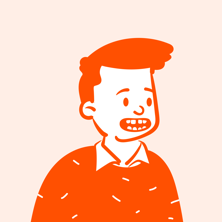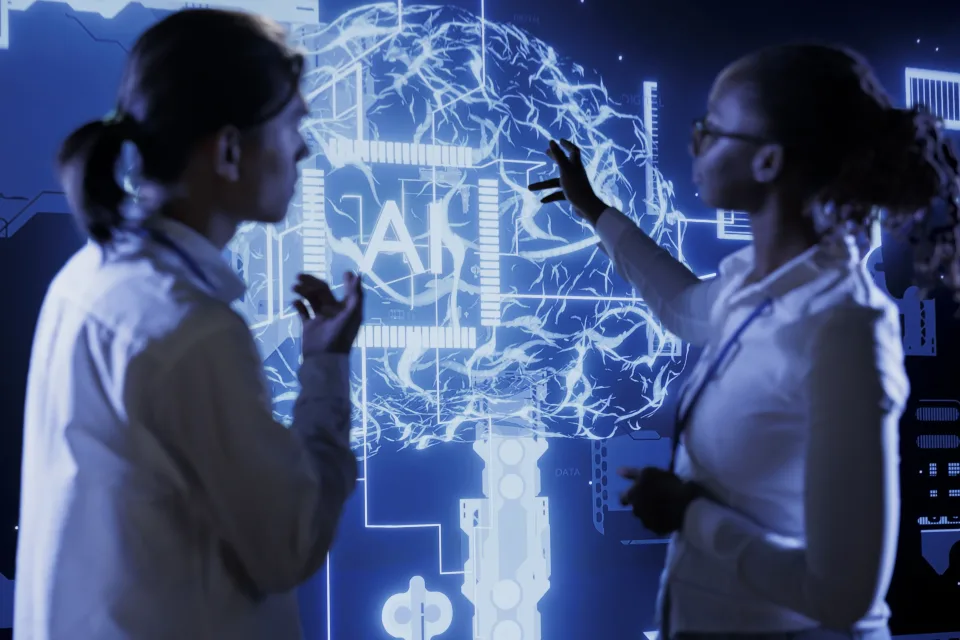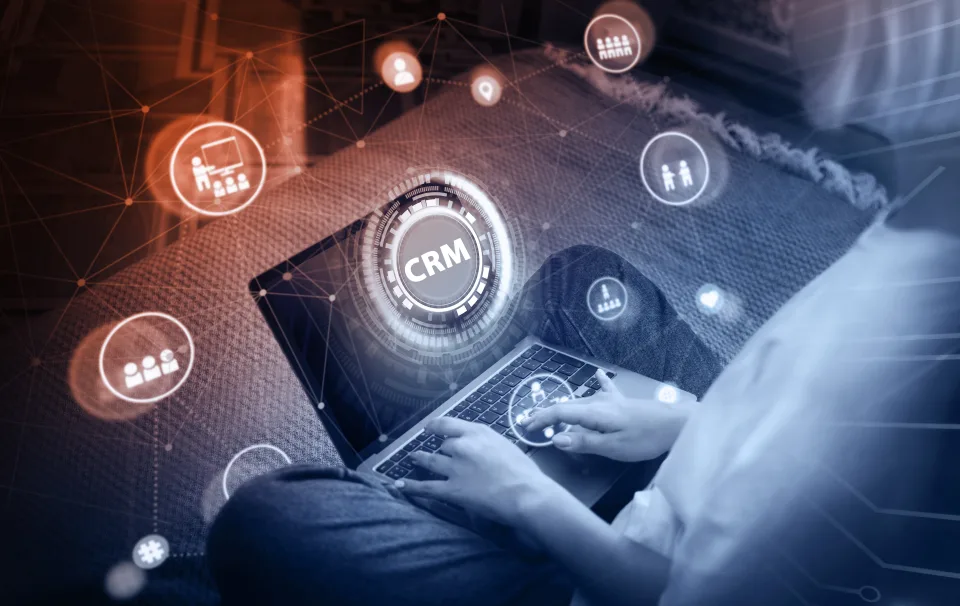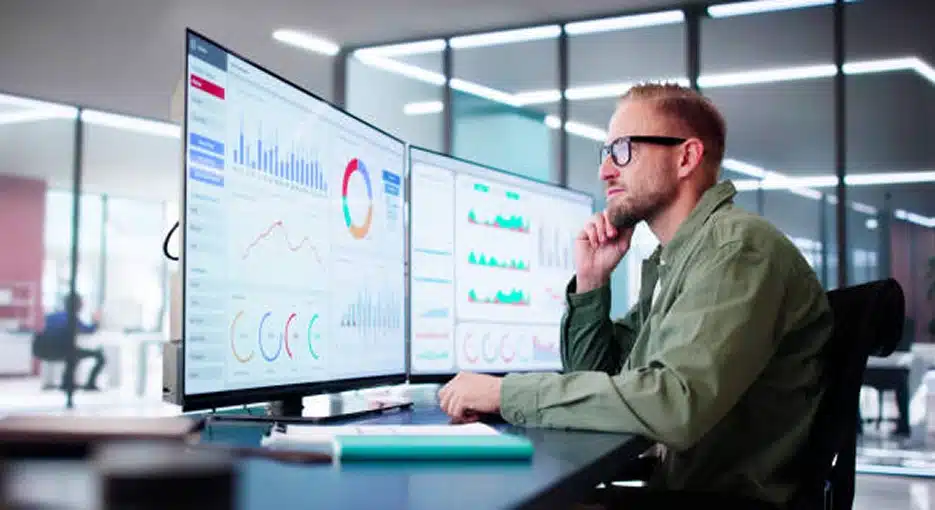AI vs Human Creativity Isn’t a Battle
The conversation around AI vs human often feels like a battle for dominance. But in today’s world, that mindset is outdated. Instead of debating who’s better at leading businesses, we need to focus on how to combine AI and human creativity to enhance innovation, not replace it. Think of AI as a strategic partner that boosts your team’s capabilities and helps scale ideas faster than ever before.
Far from being a threat, AI-assisted creativity is making it easier for brands to experiment, prototype, and adapt in real time. It’s not about AI vs human or AI taking over entirely—it’s about humans leveraging machine intelligence to focus on the deeper aspects of creativity: intuition, culture, and emotion. By doing so, marketing teams can reach a new level of efficiency without sacrificing originality or brand voice.
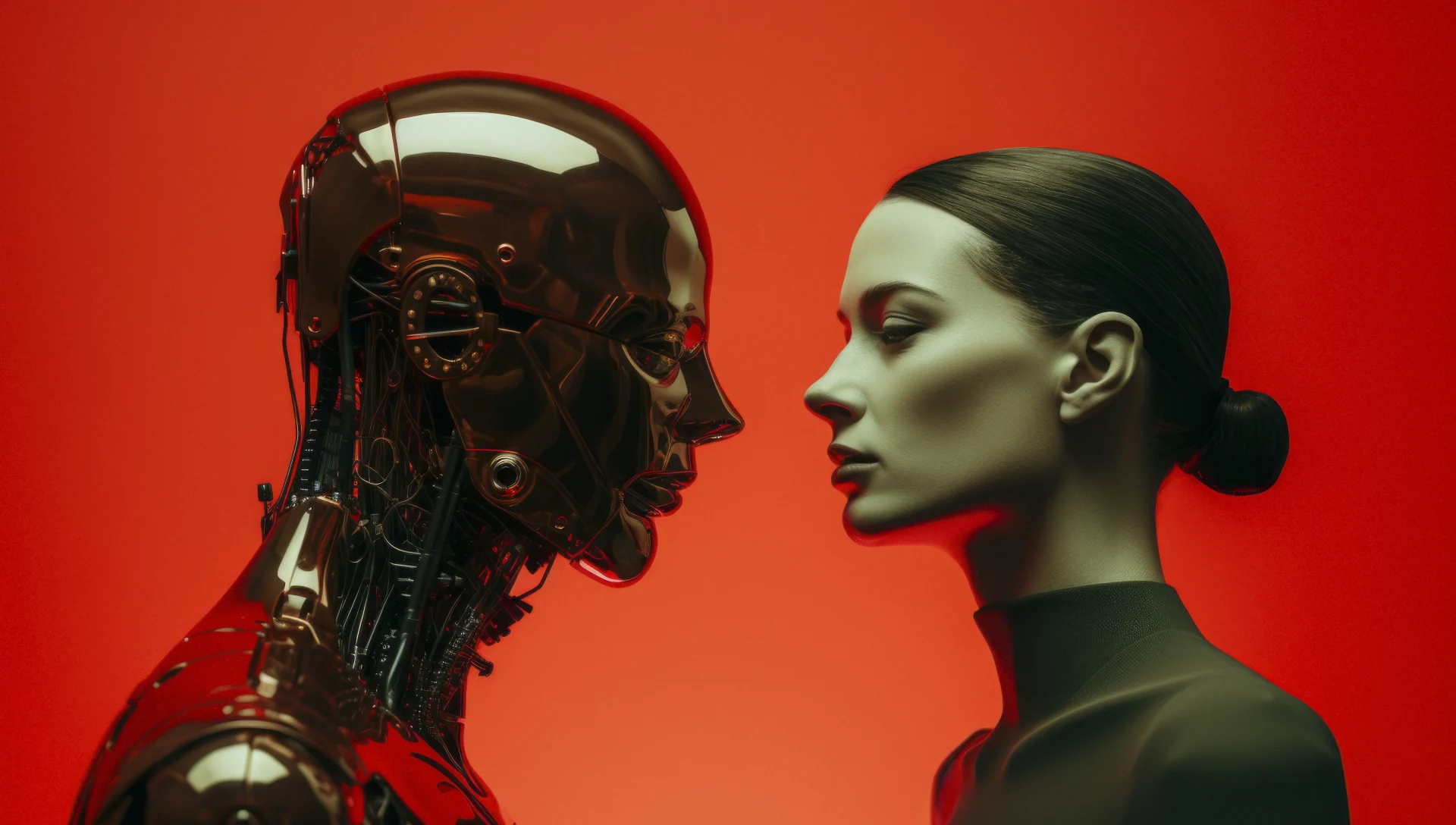
Understanding the limits and powers of both forces
When evaluating AI vs human creativity, recognizing the unique strengths of each is crucial. AI excels at speed, scale, and pattern recognition. Humans bring empathy, cultural context, and authentic storytelling. Brands that master the intersection of these forces are the ones that thrive in today’s competitive landscape.
For instance, AI creativity can generate hundreds of ideas or variations in seconds, but it cannot fully capture subtle emotional cues or cultural nuances. Human creativity, on the other hand, thrives on lived experience and instinctive insight. This distinction defines the balance between AI as a tool and humans as authors and visionaries. For more insights on this synergy, explore Forbes’ take on AI’s role in enhancing creativity
Strengths and Weaknesses: Comparing AI vs Human Intelligence
Where AI Excels: Data, Speed, Volume
AI can analyze massive datasets in seconds. It can detect user behavior patterns that might take a human team days to discover. In the context of AI vs human intelligence, AI leaders are involved in repetitive tasks like optimizing copy for SEO. It reduces manual labor, allowing teams to focus their efforts on higher-level strategic thinking.
What About Intuition, Emotion, and Originality?
No matter how advanced an algorithm becomes, it cannot still feel and connect with your audience. Can AI replace human creativity? Not entirely. Creative intuition is forged through lived experience, empathy, and personal connection—none of which AI possesses.
You don’t have to compete with AI; you have to combine your creativity with AI, and it will be the best combo for strategy.
The Smart Strategy: How to Combine AI and Human Creativity
The “Best of Both Worlds” Framework
Successful brands aren’t choosing sides in the AI vs human debate; they are applying the best of both worlds: AI and human strategy. AI is the accelerator; humans are the visionaries. The winning formula is one where machine intelligence enhances human insight.
In marketing, if you combine both AI tools and human creativity, you’ll generate multiple headline options.
When to Automate and When to Create Manually
Not all tasks benefit equally from AI. You have to understand when you can use it. If you want to automate content generation, it will work well. But when it comes to emotional storytelling or cultural campaigns, the human touch still leads.
The key is clarity in roles: AI handles scale and logic; humans handle soul and strategy. That’s the sweet spot of how to combine AI and human creativity effectively.
Creative Collaboration with AI Tools: Real Use Cases
Content Creation
Currently, many teams trust AI tools to produce first drafts of blog posts, social captions, or ad scripts. This jumpstarts the creative process, giving marketers a structure to work from. But the final voice and emotional direction still come from people.
Here’s where creative collaboration with AI tools can enhance your productivity without sacrificing authenticity.
Design: Templates vs Custom Experiences
If you design tools with AI, you can automatically generate layouts, resize graphics, and recommend visual elements based on performance data.
So, AI-assisted creative strategies, in design, work best when machines handle repetitive tasks and humans lead brand expression.
Ideation: Using AI to Spark New Creative Directions
Some teams use AI to inspire. AI can process millions of pieces of content and suggest unexpected combinations, directions, or trends. This is where using AI to boost creative work becomes truly valuable.
It’s not about machines thinking for you. It’s about showing you possibilities you hadn’t considered.
AI and Creativity in Business: What Leaders Need to Know
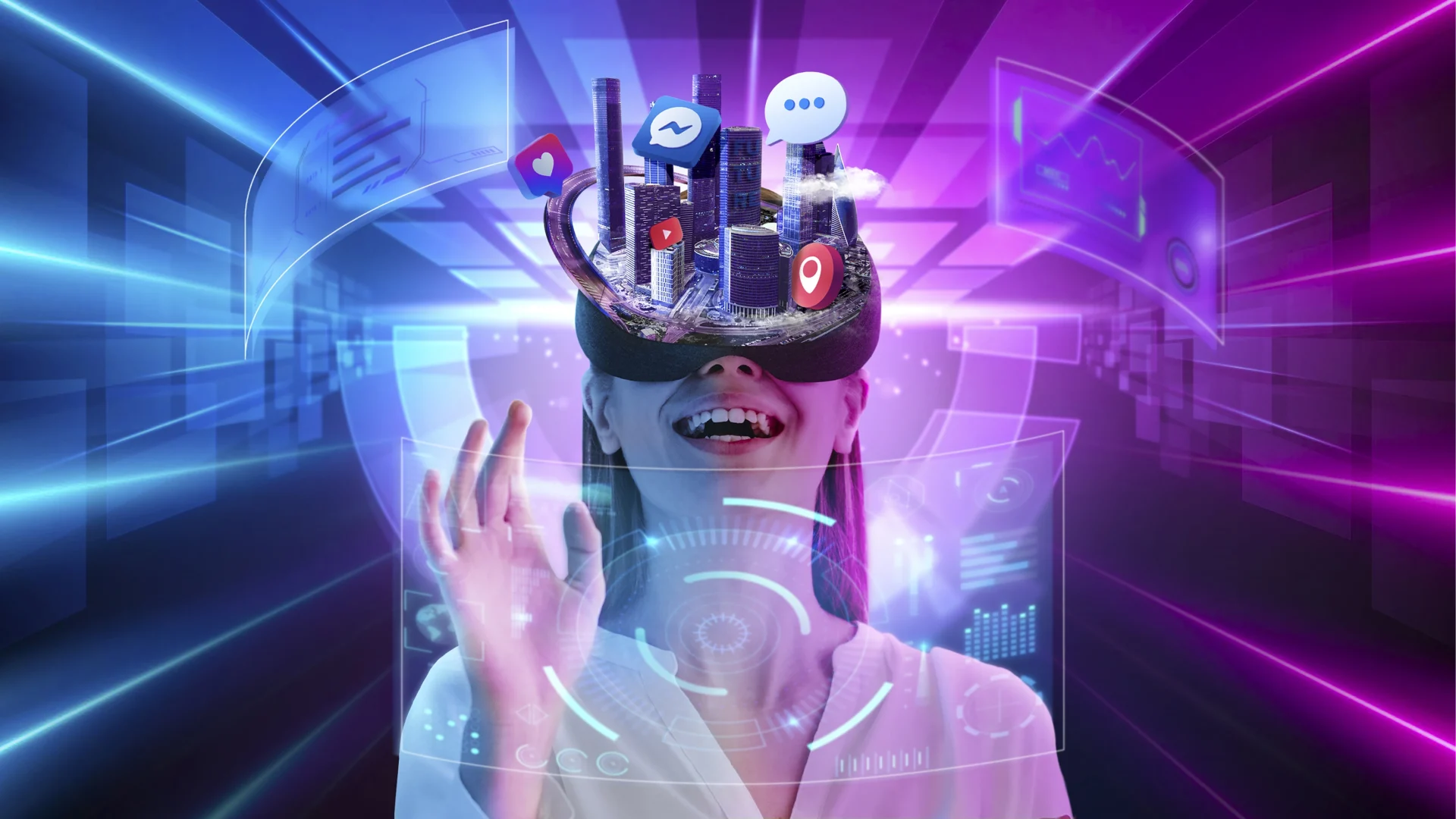
The risk of over-relying on AI
Brands that use only AI risk producing generic or soulless content. Marketing without emotion and authenticity can break consumer trust.
Culture, Trust, and Brand Authenticity
Consumers are increasingly aware of AI usage. Overuse of AI-generated content can harm your brand. AI vs human in business must be a cultural strategy, not just a tactical one.
(🔗 Helpful resource: Harvard Business Review on AI and Creativity)
Consumers are becoming increasingly aware of how brands use technology. If your brand overuses AI-generated content, it can be bad for your brand because people won’t trust it if it starts to feel impersonal or robotic. AI and creativity in business is not just a tactical issue—it’s a cultural one.
Evolving Roles: What the future of Creative Work Looks like
As we know, AI is always evolving, which means the role of marketers, designers, and creators will shift from execution to orchestration. Creativity will increasingly involve curating inputs, guiding machines, and adding meaning to the outputs they generate.
This demands new skills. The first thing is understanding how AI works, how to write effective prompts, and how to train models with your tone; these become core parts of the creative process.
This is not a loss of control. It’s an expansion of capability.
Education and Experimentation: Keys to Success
Teams that succeed are those that understand how integrating AI into creativity does two things well: they invest in education and they experiment.
That’s why marketers must understand the landscape of AI tools available. Not every AI solution will fit your needs. Knowing the difference between generative models, recommendation engines, and predictive tools helps make smarter choices.
Likewise, experimentation builds internal knowledge. A/B testing AI vs human-written copy, or mixing AI-driven design with human review, creates data-driven insight into what works best for your brand.
(🔗 Example resource: MIT Sloan on AI and Human Collaboration)
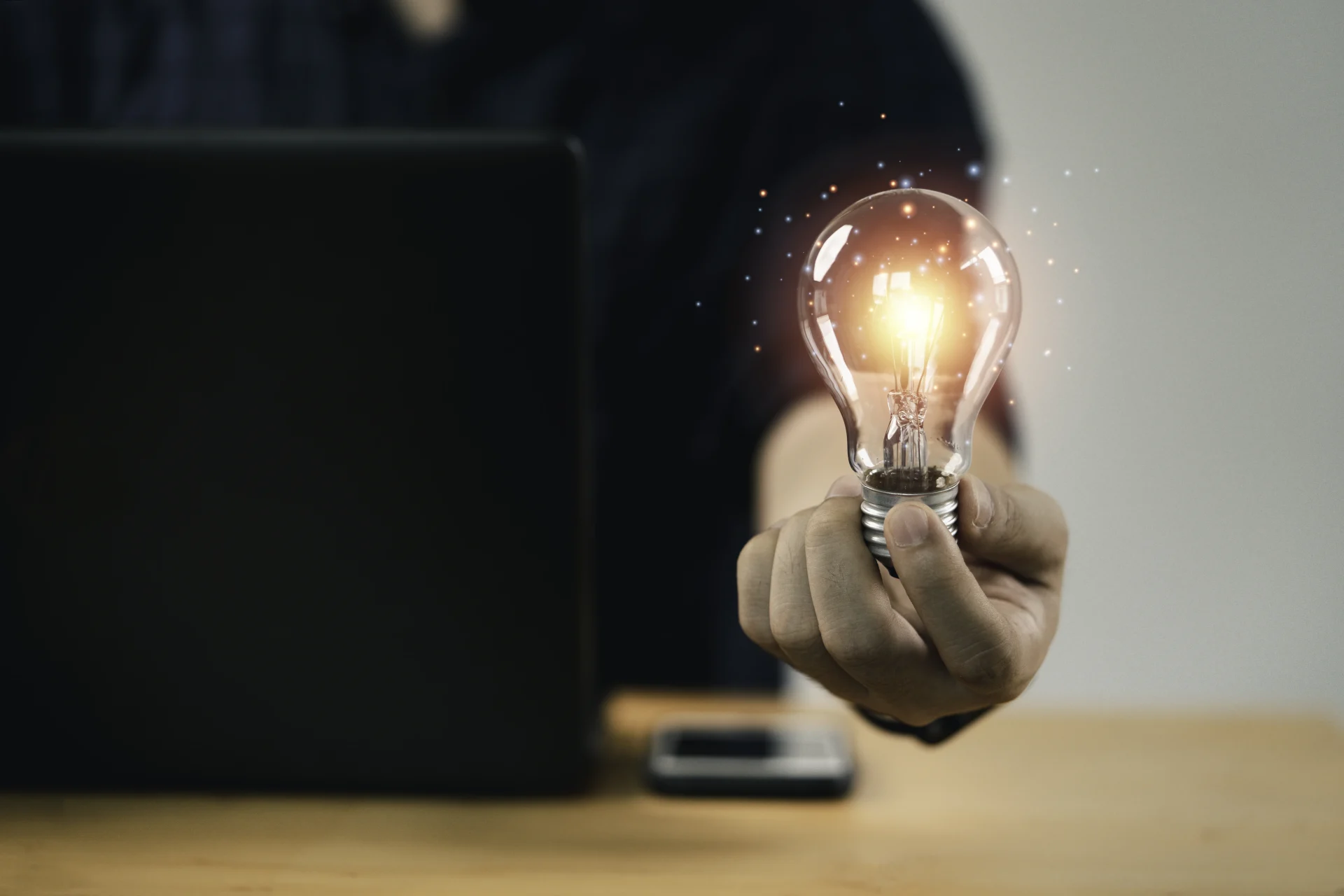
Ethics and Oversight: Keeping AI Creative Use in Check
With great power comes great responsibility. AI tools can reflect bias, generate misinformation, or operate without context. Creative leaders must establish ethical guidelines and oversight mechanisms.
Transparency matters. If a piece of content was machine-generated, disclose it. If an image was AI-created, label it clearly. This protects your brand’s reputation and helps maintain trust.
And never forget: the ultimate accountability rests with people. AI is just a tool. Humans are responsible for the outcome.
Scaling Creativity with AI: Practical Steps for Brands
To fully harness the power of AI vs human creativity, brands need actionable steps to integrate AI into their workflows effectively. Here are some practical approaches:
Step 1: Identify Repetitive Tasks for Automation
Start by pinpointing tasks that are time-consuming but low on creative value, such as resizing images, generating keyword variations, or drafting initial content outlines. AI excels in these areas, freeing up human creators for higher-value work like strategy and storytelling.
Step 2: Train Teams on AI Tools
Investing in team education is critical. Offer workshops or certifications on AI tools relevant to your industry, such as content generation platforms or design software. Understanding the nuances of AI vs human capabilities ensures teams can use tools effectively without over-relying on them.
Step 3: Implement Iterative Feedback Loops
Use AI to generate drafts or ideas, then have human teams refine them. For example, AI can produce 50 headline variations, and humans can select and tweak the top five to align with the brand voice. This iterative process maximizes efficiency while preserving authenticity.
Step 4: Monitor Performance Metrics
Track how AI-assisted content performs compared to human-only content. Metrics like engagement rates, click-through rates, and conversion rates can reveal where AI adds value and where human input is irreplaceable.
By following these steps, brands can scale their creative output without losing the human touch that defines their identity.
AI vs Human in Content Personalization
One of the most exciting applications of AI vs human creativity lies in content personalization. AI can analyze user data—such as browsing history, preferences, and demographics—to deliver tailored content at scale. For example, AI can generate personalized email subject lines or recommend products based on past purchases, something that would be impossible for humans to do manually at the same speed.
However, personalization without human oversight risks becoming mechanical. Humans must ensure that AI-driven personalization aligns with brand values and avoids overstepping privacy boundaries. For instance, overly specific targeting can feel invasive, eroding trust. The balance of AI vs human input in personalization is key: AI handles the data crunching, while humans ensure the tone and intent resonate with the audience.
Case Study: Personalized Marketing Campaigns
Retail brands like Amazon use AI to recommend products based on user behavior, but human marketers craft the emotional narratives that make those recommendations compelling. This hybrid approach drives higher engagement and customer loyalty, proving that AI vs human collaboration is a winning strategy.
Measuring Success: Metrics for AI and Human Collaboration
To evaluate the effectiveness of combining AI and human creativity, brands need clear metrics. Here are some key performance indicators (KPIs) to consider:
- Time Savings: Measure how much time AI tools save on tasks like content drafting or data analysis. For example, if AI cuts content creation time by 30%, that’s a tangible win.
- Engagement Rates: Compare engagement metrics (likes, shares, comments) for AI-assisted vs. human-only content to see which resonates more.
- Cost Efficiency: Calculate the cost savings from automating repetitive tasks versus the investment in AI tools.
- Brand Consistency: Assess whether AI-generated content maintains brand voice and authenticity through human oversight.
By tracking these metrics, brands can refine their approach to AI vs human collaboration, ensuring they maximize both efficiency and impact.
Overcoming Resistance to AI Adoption in Creative Teams
Despite the benefits, some creative teams resist AI adoption, fearing it will diminish their role or stifle originality. Addressing these concerns requires a cultural shift:
Communicate the Value of AI as a Partner
Emphasize that AI is not here to replace humans but to enhance their capabilities. Show how AI can handle mundane tasks, giving creatives more time for ideation and strategy.
Foster a Culture of Experimentation
Encourage teams to experiment with AI tools in low-stakes projects. For example, use AI to generate social media captions and compare them to human-written ones. This hands-on experience builds confidence and demonstrates value.
Provide Ongoing Training
Resistance often stems from unfamiliarity. Regular training sessions can demystify AI, showing teams how to integrate it seamlessly into their workflows.
By addressing these barriers, brands can create a collaborative environment where AI vs human creativity thrives, driving innovation and efficiency.
Creativity Isn’t Dying — It’s Evolving with AI
AI vs human is not a zero-sum game. It’s a call to evolve. As machines get better at doing what they do best, humans are free to focus on what only they can do—imagine, empathize, and connect.
The future of creativity is hybrid. It belongs to brands that know when to automate and when to humanize, when to let AI lead and when to take the reins. It belongs to those who embrace the best of both worlds, AI and human – no more AI vs Human.
If your team is ready to explore this new frontier, start combining creativity and automation at Stremeline.
